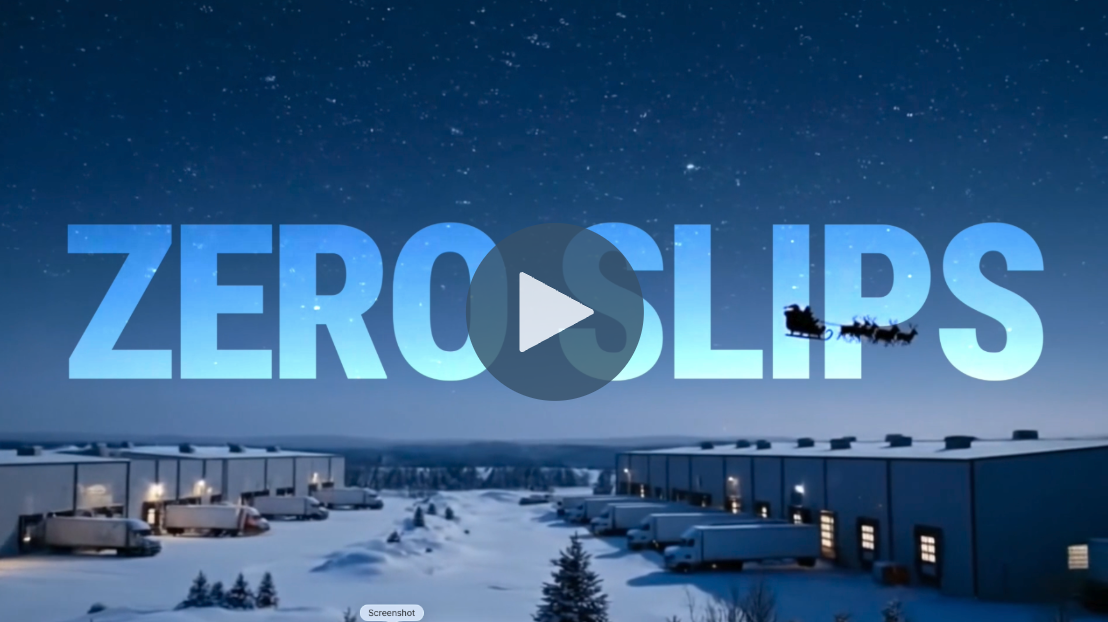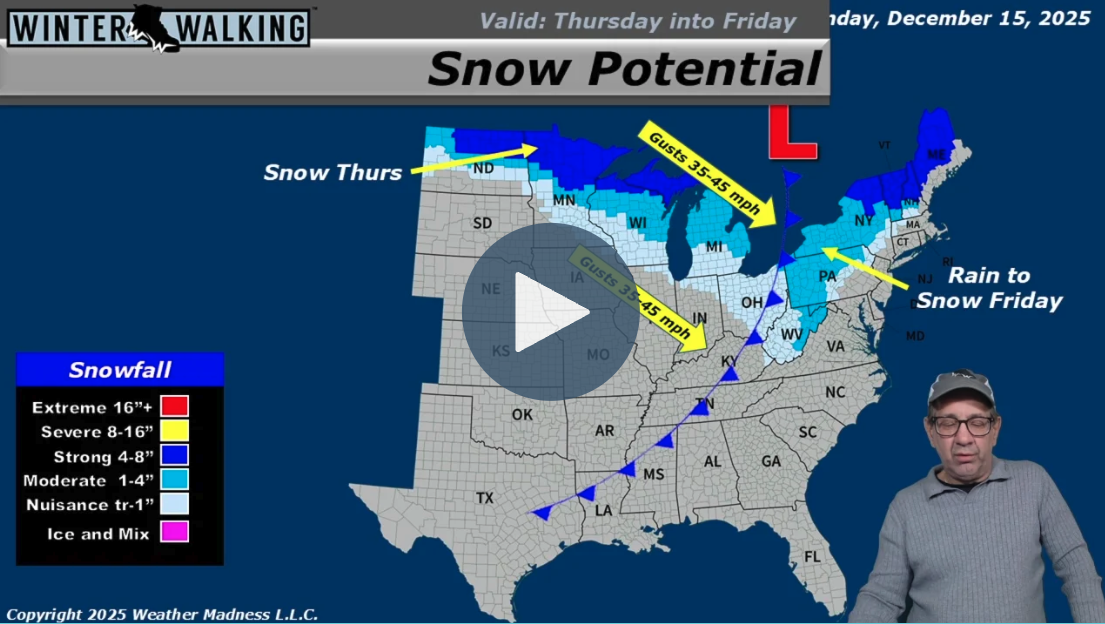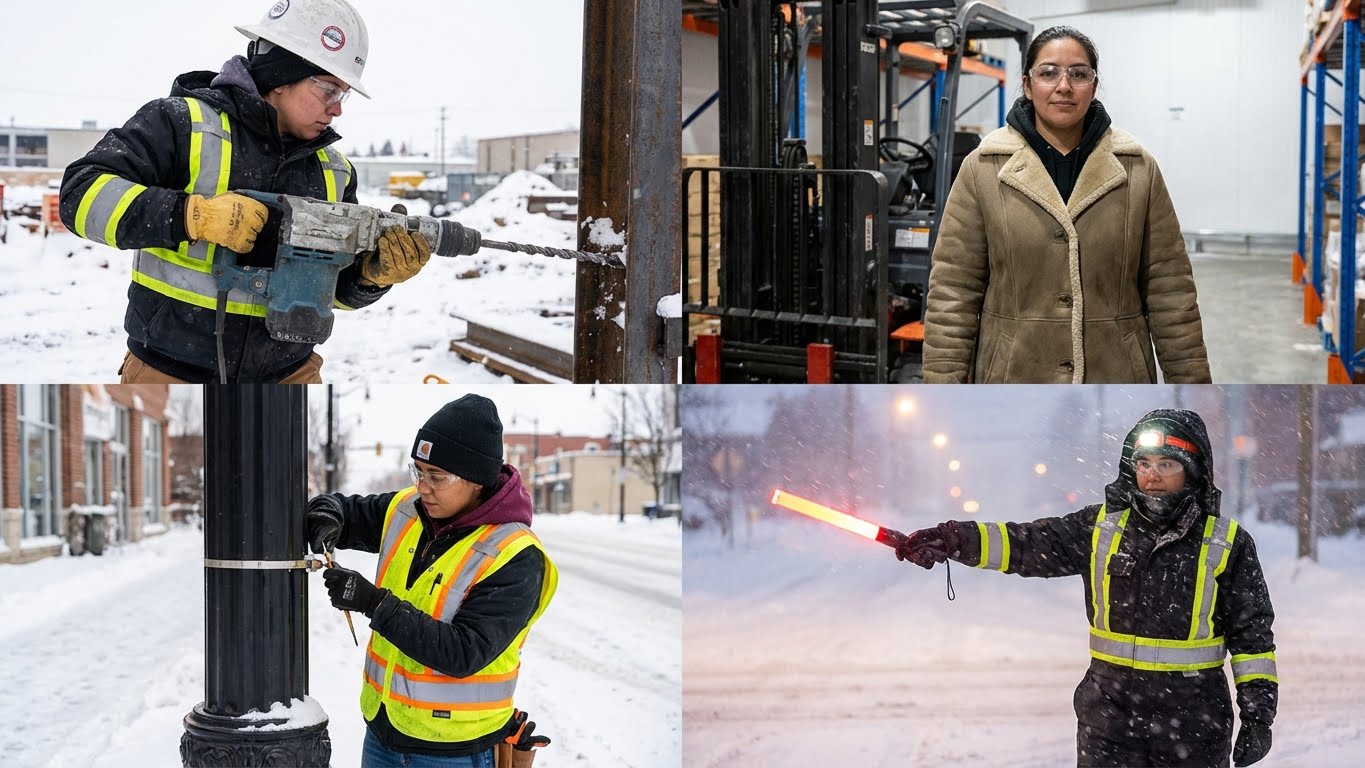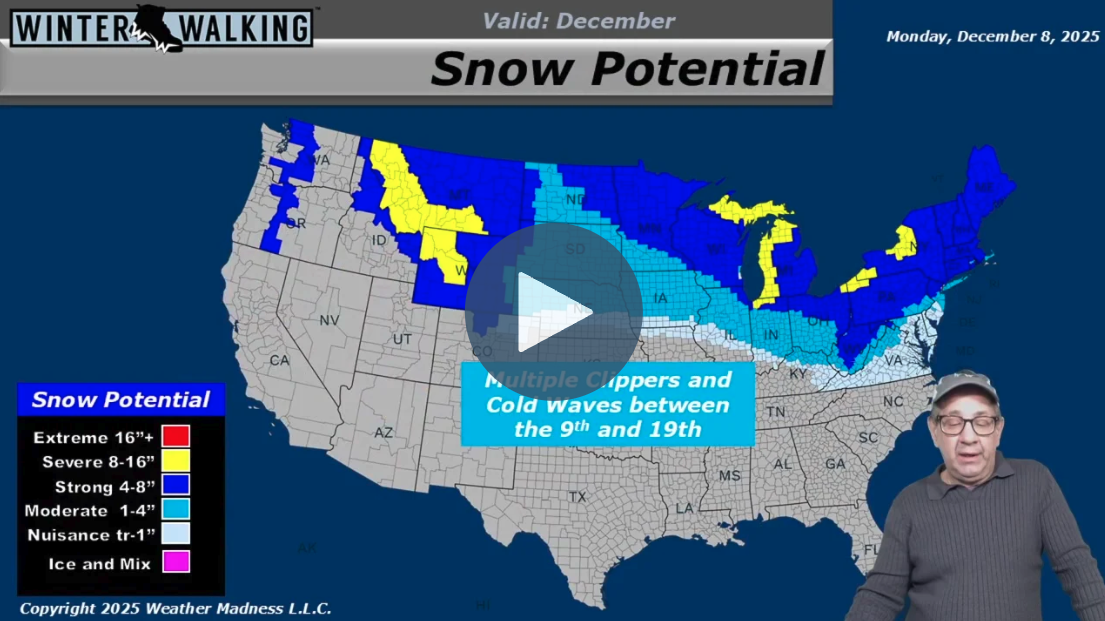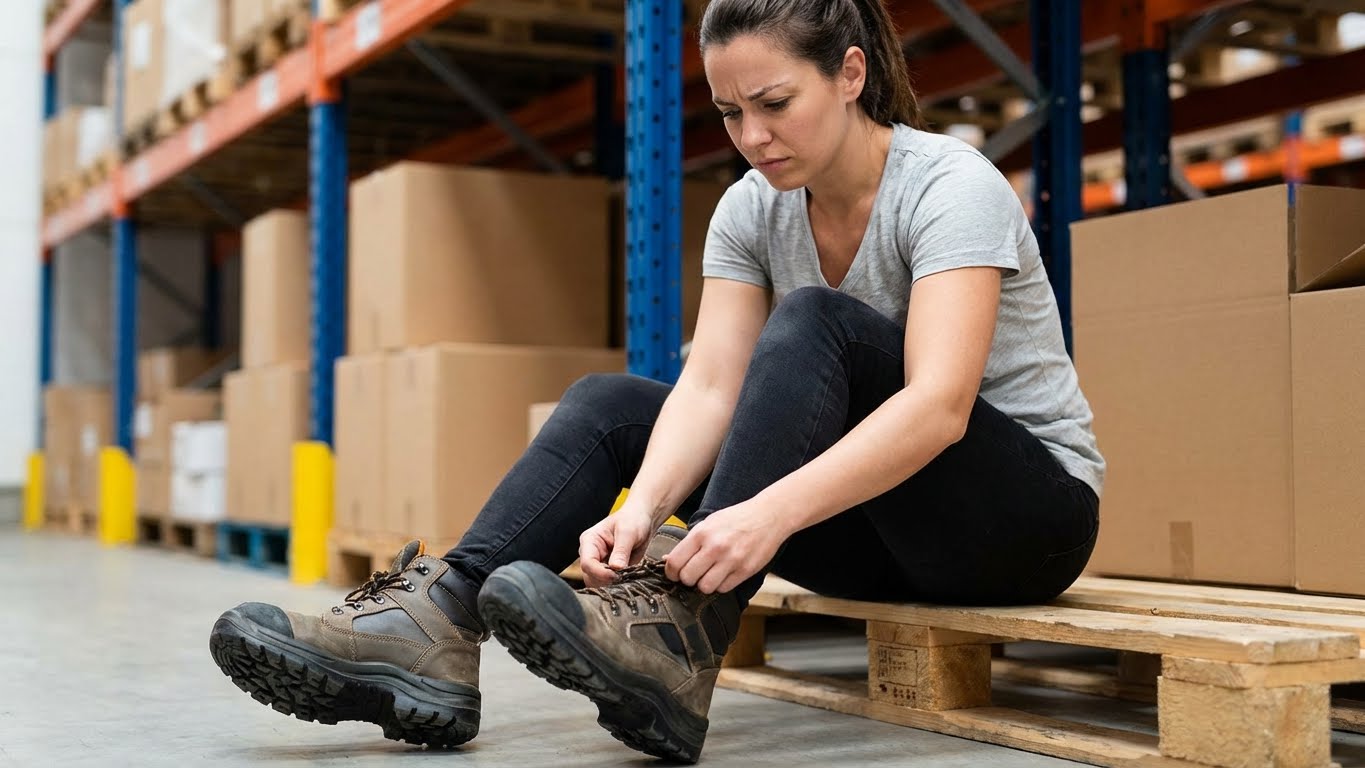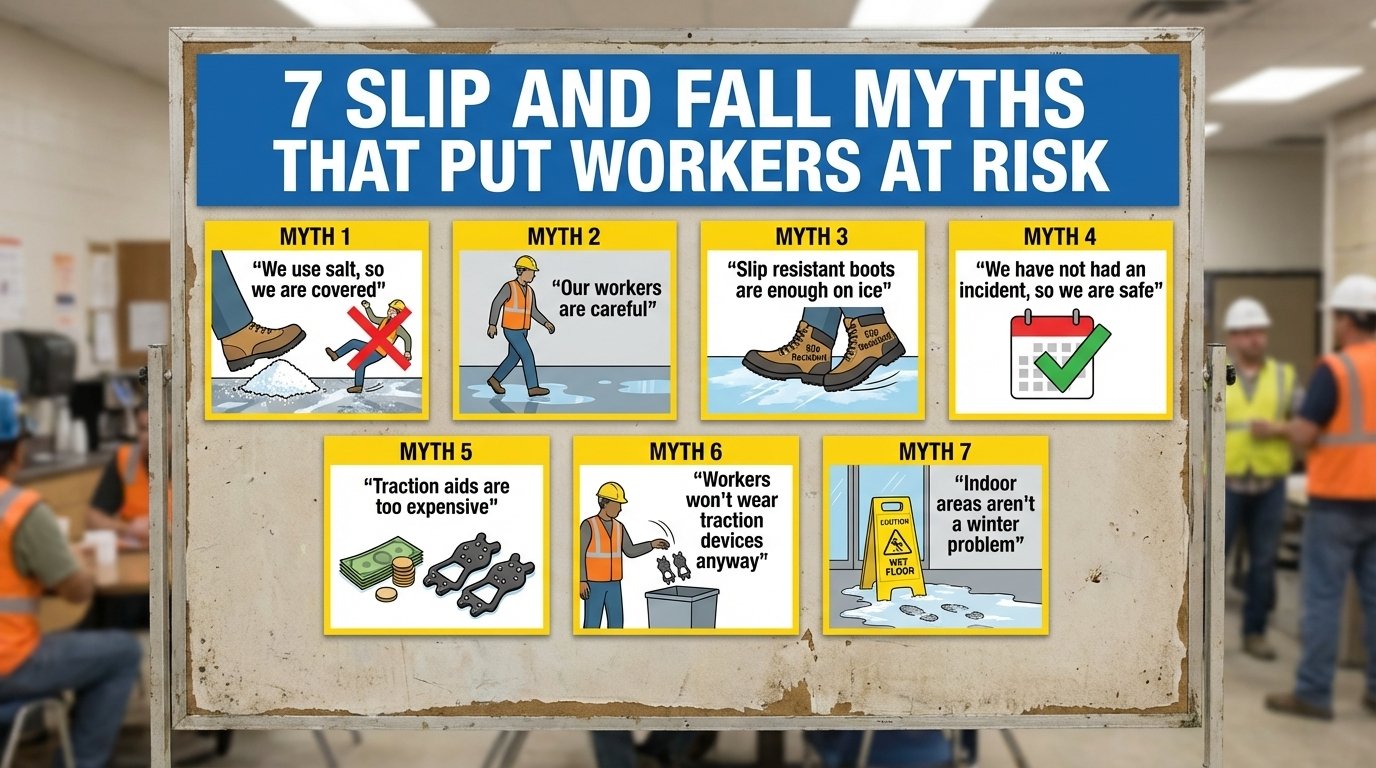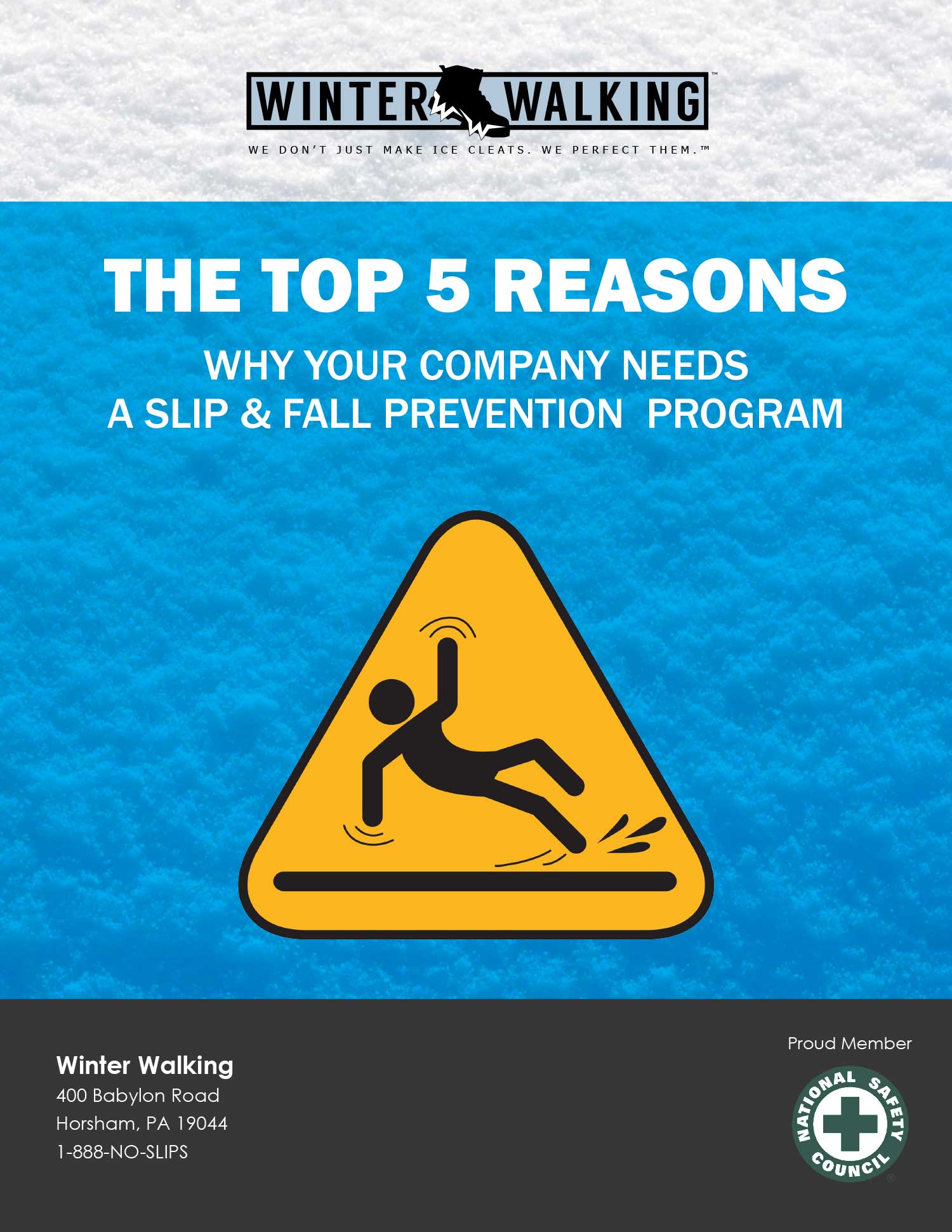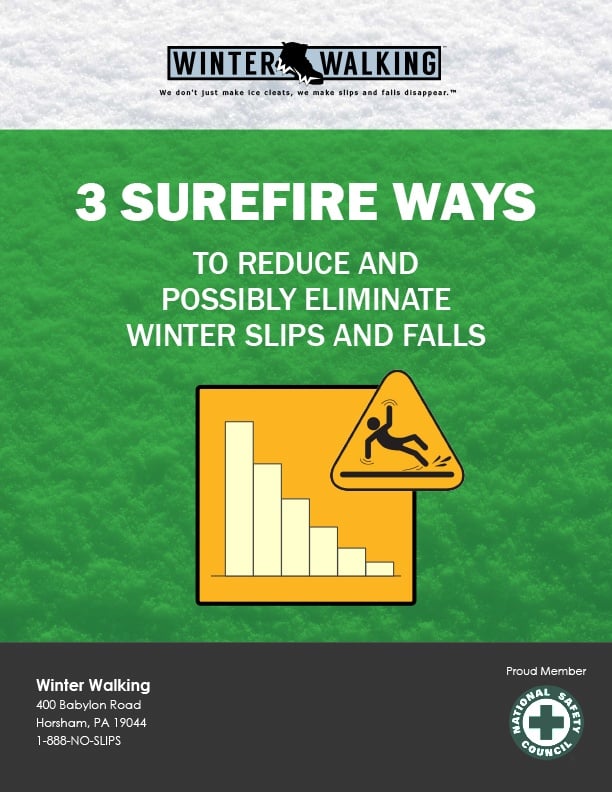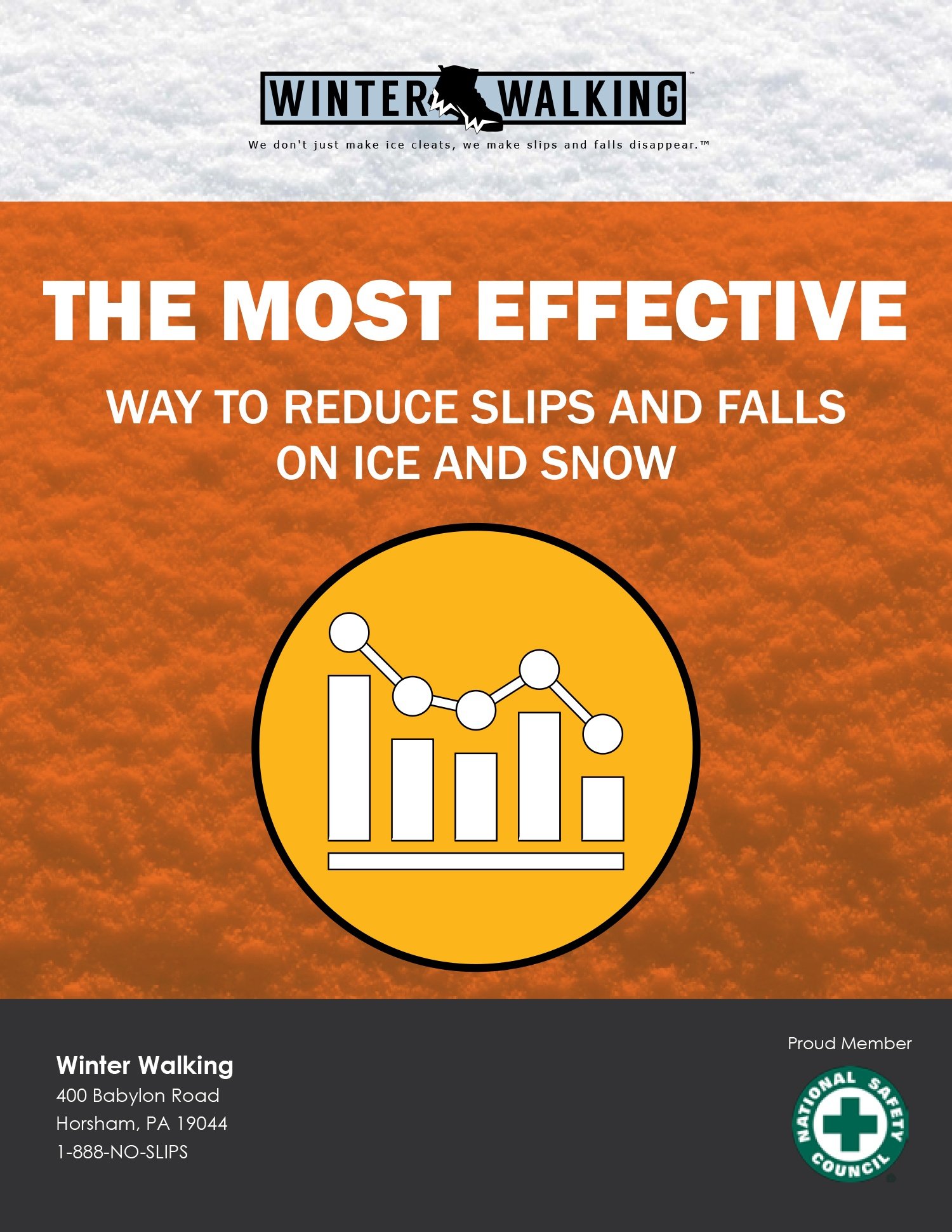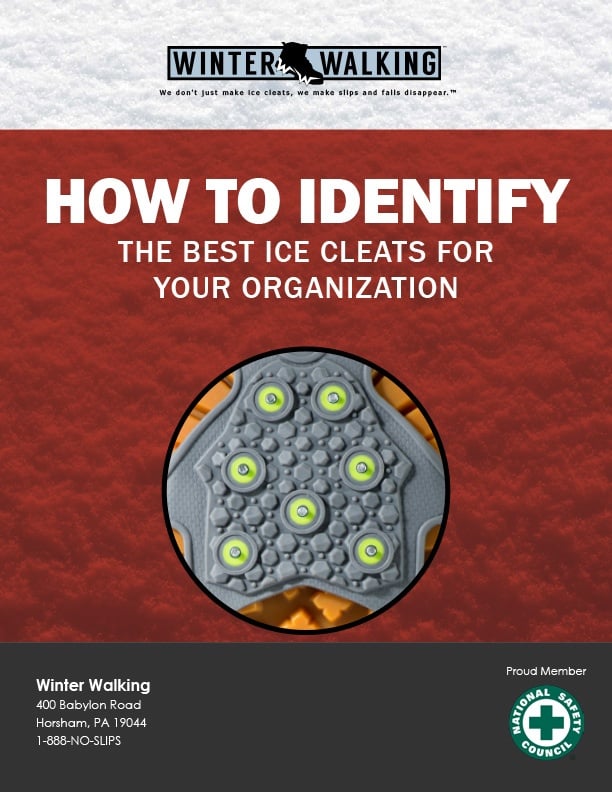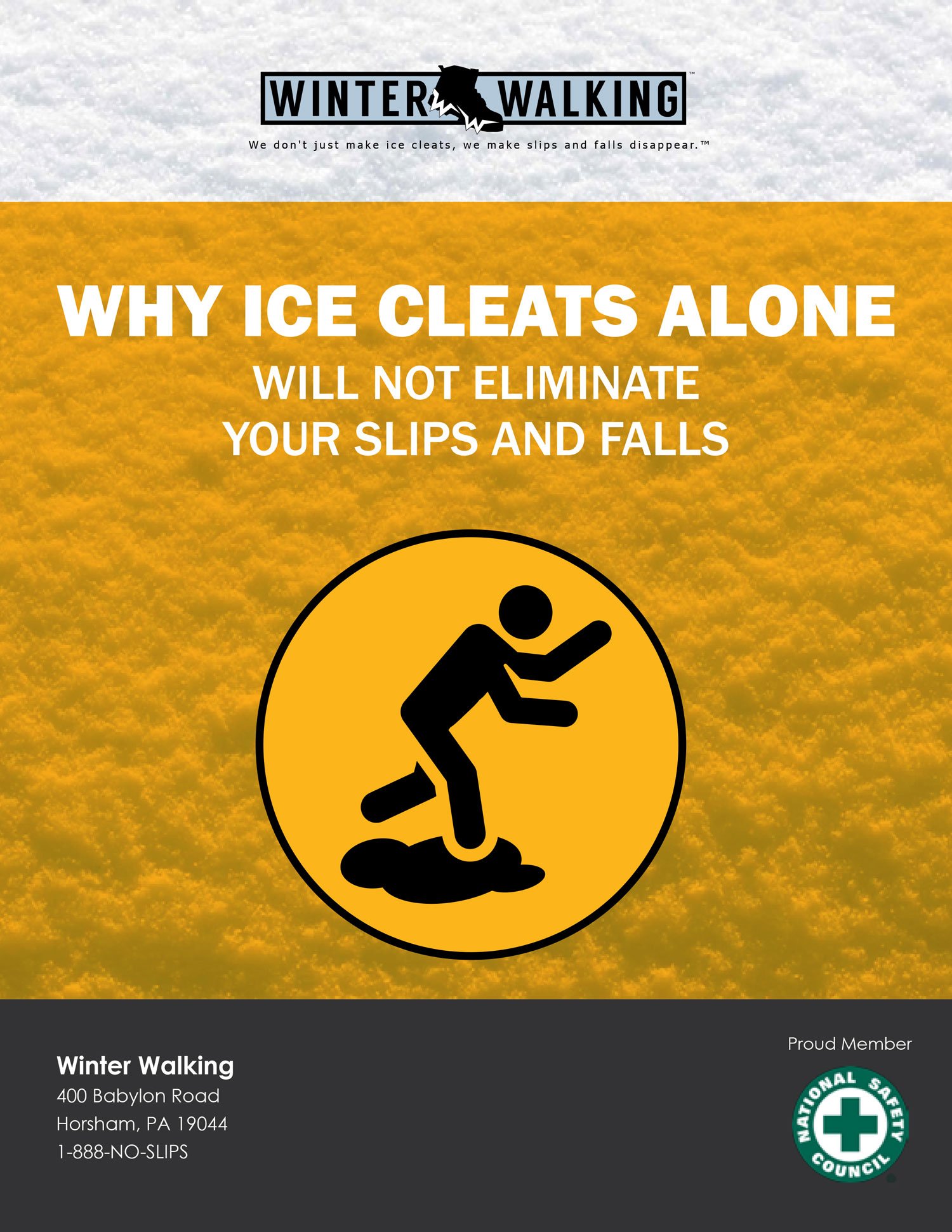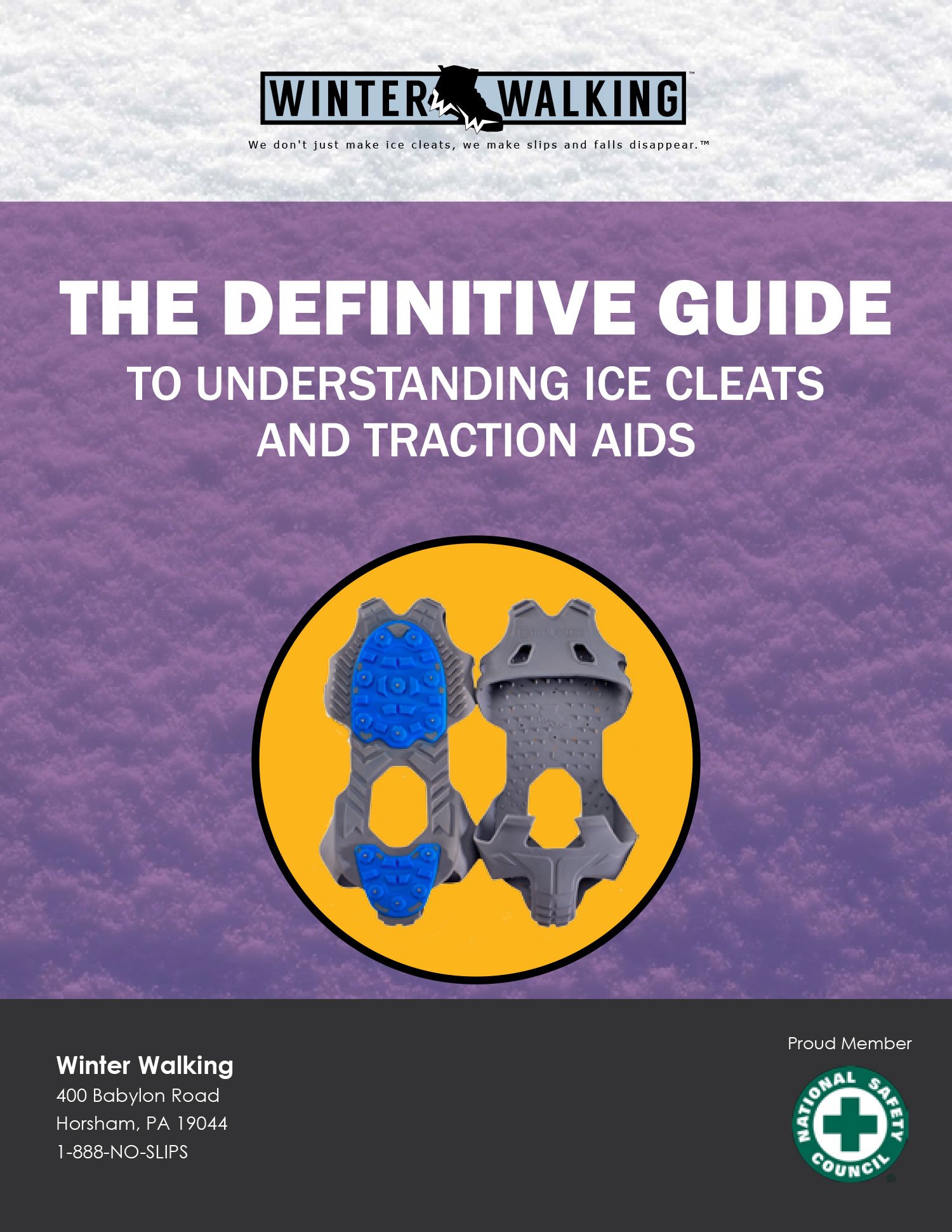Forget the reindeer and the magic dust for a moment. Let’s talk logistics. Consider the operational demands: One night. Billions of stops. Diverse, unpredictable terrain ranging from slick urban loading zones to frozen rural driveways. When we talk about high-stakes, time-critical delivery operations, nobody has more experience than the man in the red suit. He runs the tightest supply chain on the planet. But here is the industry secret that keeps the operation running smoothly: when the pressure is on, Santa doesn’t rely on "Christmas magic" to stay vertical on the ice.
Continue Reading
Meteorologist Henry Margusity reports that the icy winter grip continues on December 15, 2025, with a potent cold front expected to sweep across the northern United States later this week. While current conditions show scattered snow showers in the Great Lakes and Appalachians, the approaching system for Thursday and Friday poses a significant threat of "flash freezes." As the front passes, precipitation is forecast to transition rapidly from rain to snow, accompanied by a sharp drop in temperatures—some areas are already seeing single digits—creating hazardous, slippery surfaces. Intense arct[…]
Continue Reading
A practical guide to fit, comfort, and real protection Women are taking on more roles in construction, manufacturing, logistics, utilities, and outdoor service work. As the workforce diversifies, winter safety needs to evolve too. Cold weather introduces slippery surfaces, reduced visibility, and tougher working conditions. When PPE does not properly fit women, the risks grow even higher. Poorly sized gear leads to discomfort, non compliance, and preventable injuries. This guide walks through the key winter safety considerations for women in industrial and outdoor environments, and why fit and[…]
Continue Reading
Meteorologist Henry Margusity reports a significant shift in the weather pattern beginning December 8, 2025, characterized as a "Clipper Parade" that will send multiple fast-moving storm systems from the Midwest into the Northeast over the coming weeks. The current disturbance is already producing snow across parts of Virginia, West Virginia, and Kentucky, while a new clipper system is set to track through the Great Lakes. This pattern is ushering in a deep freeze, with a very cold air mass expected to lock into place and fuel continuous winter weather for the northern tier of the country. The[…]
Continue Reading
A closer look at footwear fit, sizing gaps, and ergonomic differences Slip and fall incidents are among the most common workplace injuries during winter. Ice, slush, and freezing conditions make every step more dangerous, but what many organizations overlook is that women often face unique risks in these environments. These risks have nothing to do with skill or awareness. Instead, they come from differences in footwear fit, equipment sizing, and the way many winter traction products are designed. Understanding these factors helps employers create safer and more inclusive winter safety program[…]
Continue Reading
A practical guide for separating fact from fiction in winter safety Slips and falls are one of the most common workplace injuries during winter. Yet many organizations still rely on outdated beliefs that unintentionally increase risk. These myths lead to underestimating hazards, misusing equipment, and assuming workers are safer than they truly are. Myth 1: “We use salt, so we are covered” Reality: Salt helps, but it is not a complete solution. Salt becomes ineffective when temperatures fall below certain levels. Even when applied correctly, refreezing happens overnight, shaded areas remain sl[…]
Continue Reading

